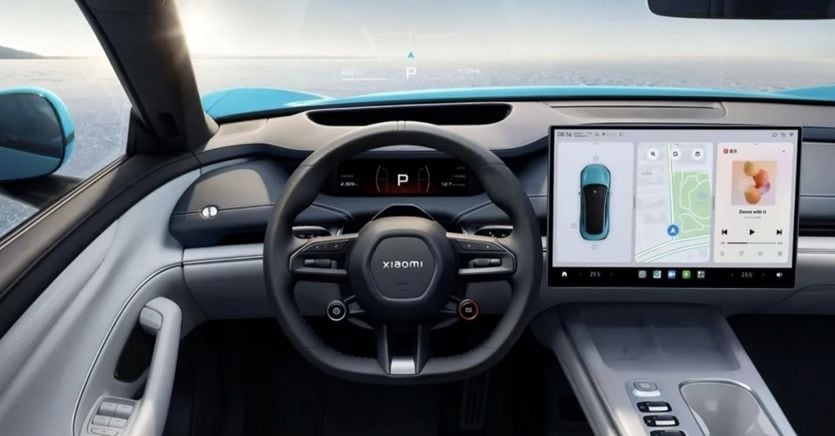Listen to the audio version of the article
Xiaomi’s arrival in the automotive world is ever closer. Born thanks to an investment of 10 billion dollars to be spent by 2031, with an initial investment of 1.5 billion dollars, the Beijing Xiaomi SU7 (acronym which stands for Speed Ultra 7) will be the first model of a range that aims to compete globally with major automotive manufacturers.
Xiaomi SU7 interior
The official images of the interior of the Xiaomi SU7 confirm the high level of digitalisation and connectivity, starting from the large 16.1-inch screen from which to manage the infotainment system based on the proprietary HyperOS operating system of the Chinese hi-tech manufacturer. Under the large monitor there is a row of physical buttons, which we also find on the central tunnel, confirming how the “all touch” philosophy introduced by Tesla is starting to create some doubts. In addition to the central screen, the SU7 features digital instrumentation, a head-up display and two monitors for the rear passengers. On the steering wheel there are several buttons and also two round satellites from which to set the different driving settings. Ready to debut in April at the next Beijing Auto Show, the SU7 will arrive on the Chinese market by June with an indicative price of around 40,000 euros.
How long is it
How long will the first electric car produced by Xiaomi be? The length will reach almost 5 meters, to be precise 4997 mm, the width 1963 mm and the height 1455 mm with a wheelbase of 3000 mm. On the tire front, it will fit two sizes, 245/45 R19 and 245/40 R20 respectively.
Xiaomi SU7 autonomy and engines
While waiting for the official price list, the Xiaomi SU7 will be available in a rear-wheel drive version with a 220 kW single engine and a 4×4 probably with a dual engine with a maximum power of 495 kW (220 kW + 275 kW). As regards the battery packs, one will be available produced by Byd with LFP (lithium-iron-phosphate) cells, and one by Catl with NMC (nickel-manganese-cobalt) cells with an indicative capacity of more than 100 kWh. In the most capacious version, the autonomy of the Xiaomi SU7 could reach 700 kilometers.
